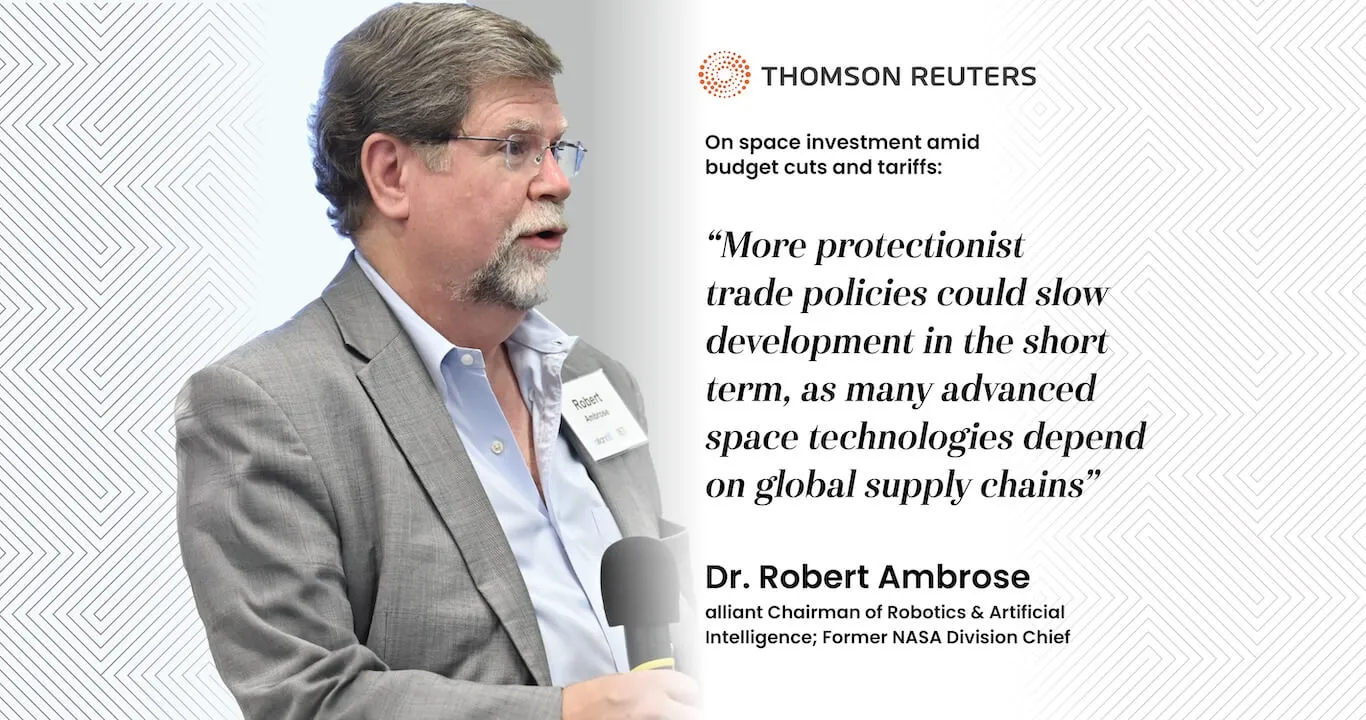If you have any questions about this article, please send us a message.
An item in the IRS’s strategic operating plan to centralize its enforcement function could herald the most substantial reorganization for the agency since 1998 — or it may fizzle out altogether.
The plan, released April 6, describes a problem: Compliance priorities and case selection are handled separately by each of the IRS’s four divisions, and data-based tools are used inconsistently, making it harder to identify high-risk cases that cross the agency’s divisional lines.
The IRS hopes to have its centralized compliance planning and case selection function up and running by fiscal 2026, according to the report. But observers, including former top officials involved in shaping that plan, foresee challenges ahead, despite the agency having undergone similar reorganization efforts in the past.
The IRS’s plan states that it will “develop a centralized, integrated approach” for assessing risk, and as a component of that, it “will consider redesigning the compliance organization to a more centralized approach to enable dynamic allocation of the workforce” with high-income tax compliance in mind.

That concept isn’t a novel one for the agency, according to Donald Sniezek of alliantgroup, a former IRS director of compliance planning and analytics. “They’ve been moving in this direction for a long time already,” he told Tax Notes.
The IRS has launched many high-profile initiatives in recent years to coordinate its response to issues across the divisions, particularly in the compliance area. For example, it launched its Joint Strategic Emerging Issues Team in early 2022, formed its Office of Promoter Investigations in 2021, and established the Office of Fraud Enforcement in March 2020, all of which are intended to provide coordinated enforcement of issues across the agency’s divisional lines.
Deja Vu
The IRS set a fiscal 2024 deadline to conduct an enterprisewide review of its organizational structure and to propose changes, but observers were quick to point out that the IRS already has a reorganizational plan to centralize its compliance function it could lean on.
About halfway into the 254-page Taxpayer First Act report, issued in January 2021, is a section describing the IRS’s vision to consolidate its enforcement mechanisms in one place: a new Compliance Division. That division would be headed by a new assistant commissioner of compliance and include five functions: compliance, whistleblower, criminal investigation, exam, and collection.
The goal, according to the TFA report, is to avoid duplicating compliance efforts across the separate business operating divisions and to better identify compliance issue trends across taxpayer segments.
That goal fits neatly with Initiative 3.1 in the new strategic operating plan describing the agency’s interest in centralizing its enforcement operations, but observers say the agency likely hasn’t settled on the “how” just yet.
“Nothing is off the table for consideration,” former IRS Commissioner Charles Rettig, whose term wrapped up in November 2022, told Tax Notes
The IRS indicated in its strategic plan that it intends to solicit feedback on the plan’s various initiatives, and the enforcement reorganization is no different, according to Rettig. “I expect the IRS to fully engage with external stakeholders before designing and implementing any reorganizational changes,” he said.
The IRS was required by law to put together the TFA report, but that doesn’t mean it was done haphazardly simply to appease congressional interest. A lot of effort, both internally and externally, went into assembling that report, according to Tom Cullinan, Rettig’s former counselor at the IRS and later acting chief of staff, who departed the agency in March.
Meetings were held with the IRS’s regular array of external partners, and input was received from every possible function within the agency. “The IRS wanted to make sure it got the best thoughts from everybody involved. This was not at all a flyby,” said Cullinan, who indicated that he worked closely on that plan.
However, there are plenty of different ways the IRS could be reorganized, and Commissioner Daniel Werfel may have different thoughts about how to do it as he settles into the role, added Cullinan, now with Chamberlain, Hrdlicka, White, Williams & Aughtry.
Sniezek, who left the IRS in May 2021, said that while the TFA report might serve as a guide, the details of what the IRS ultimately comes up with would likely differ. “I think they’re moving towards this objective of centralizing all these similar-type processes,” he said. “But is it going to be exactly that notional, organizational chart that was in that report? I don’t know. Quite honestly, I don’t think it will be.
For now, the IRS says it’s keeping an open mind. In a statement, the agency said only that it was conducting a review of its organizational structures “and is committed to ensuring the organizational structure is optimized to support the IRS strategic vision.”
Logical Breakdown
Before the Internal Revenue Service Restructuring and Reform Act of 1998 (RRA), the agency’s enforcement operations were divided regionally, with all the various functions carrying out work under regional commissioners, who had a great deal of autonomy. However, over time, those regions began to take on their own personalities.
“There was a lot of consternation about how the deal you got depended on which district you were in, and that just wasn’t right,” recalled Rochelle Hodes of Crowe LLP.
The RRA addressed that issue by replacing the regional approach to compliance with one based on specializing in taxpayer types. Now, the IRS is split into four business operating divisions: Large Business and International, Small Business/Self-Employed, Tax-Exempt and Government Entities, and Wage and Investment.
Michael J. Desmond of Gibson, Dunn & Crutcher LLP suggested that the problems with the old, pre-RRA organizational structure are manifesting themselves in different ways under the new system.
In the pre-RRA days, Desmond explained, cases would sometimes involve, for example, a bank in Los Angeles, but investigating a banking issue was more in line with the expertise of IRS personnel in New York. Although there was some sharing of cross-regional substantive expertise, it wasn’t ideal, he said.
The post-RRA structure facilitated more specialization, but more and more, tax compliance issues are emerging that aren’t unique to taxpayer type, Desmond observed.
For example, syndicated conservation easement cases frequently involve partnerships, which would typically be handled by SB/SE, noted Desmond, a former IRS chief counsel. However, some of those partnerships can involve huge tax dollar amounts or involve charities, which makes room for LB&I or TE/GE to play a role, he said.
“So you start to see, I think, a breakdown in the logic behind dividing taxpayers into the SB/SE, LB&I, TE/GE structure that’s currently there,” Desmond said.
That kind of cross-divisional relevance is also evident when it comes to audits of large, complex partnership structures, cryptocurrency, and international cross-border activities involving individual taxpayers, Desmond observed. “So just like the old geographic system where people were involved across the country, here people are involved across different operating divisions with similar issues,” he added.
Weighing theTrade-Offs
The restructuring of the agency that took place in 1998 was generally well received, and over 20 years later, each of the operating divisions has had time to develop best practices, according to Hodes. Now, bringing those best practices together makes sense, she said.
Sniezek agreed. The four divisions have developed their own distinct types of analytical tools that they apply to their taxpayer populations, so centralizing that would be like “bringing in the best of all worlds,” he said.
Still, there are pros and cons to each kind of organizational structure, Sniezek continued. The current structure allowed the IRS divisions to specialize, and it wasn’t unusual for there to be cross-divisional teams or initiatives set up to tackle a common compliance issue. However, determining how those should be handled was sometimes tricky, because those initiatives required decisions about how much resources each division gives to the effort at a cost to their own individual divisional priorities.
“From a centralized aspect, I’d have had a little bit easier time in allocating those resources as opposed to ‘You got yours, I got mine, and now we have to figure out how to adjust our plans to touch the stuff in the middle,’” Sniezek explained.
Taxpayers might not notice much immediate difference following a reorganization, but the observers agreed that over time the IRS should become better at targeting its enforcement efforts toward noncompliant taxpayers.
“If an 18-month audit took 18 months instead of two and a half years, I’m not sure that the taxpayer is necessarily going to be grateful for that kind of development,” Desmond said. Tax professionals, however, would more readily notice a difference in their interactions with IRS personnel under a centralized enforcement structure as it should make it easier for the IRS field agents to access specialists, he predicted.
Currently, if an international issue comes up in an audit but the auditor isn’t familiar with international issues, then the practitioner representing the taxpayer ends up in an “educational exercise” with the auditor, Desmond said. The auditor could try to rope in a specialist from another division, but doing so can create internal challenges that slow things down and create further issues, he said, adding that a centralized compliance structure should streamline that process.
However, replacing the compliance structures with a centralized one isn’t without some downsides, Desmond said. The IRS might lose some advantages and efficiency when it comes to audits of taxpayers that fit neatly into a box, like a traditional large, publicly traded C corp, because an agent could be auditing everything from a C corp to a partnership to a high-net-worth individual on any given day, he said.
The trade-off is that the IRS will gain a better cross-functional view of complex taxpayer situations, and that’s an area of enforcement that it has explicitly said it will increase its audit presence in, Desmond added.
‘A Heavy Lift’
Just because a compliance centralization reorganization sounds good on paper doesn’t mean it’s a given that it will take place. For all the upside behind undertaking a reorganization, there are plenty of obstacles still in the way.
“The challenge is more behind the scenes,” according to Desmond. Lots of blanks on the organizational chart would need to be filled in, and there are issues related to human resources and unions to navigate as well, he said.
“When you move people around on a chessboard in an organization like the IRS, it’s not just a matter of republishing an org chart,” Desmond added
Sniezek predicted that any major reorganization would be “a heavy lift.” For example, the IRS has three different directors of compliance analytics placed in three of the divisions. “That’s kind of a big umbrella — is that too big for one person? You’d have to think through how all that would be structured,” he said.
David Kautter, a former acting IRS commissioner and Treasury assistant secretary for tax policy, also warned that the reorganization would be “hard to implement since every organization has a certain inertia to it.”
The prospect of moving from one division to another with a new boss creates uncertainty, which isn’t necessarily popular, said Kautter, now of RSM US LLP and a member of Tax Analysts’ board of directors.
Another key difference between the 1998 restructuring and the one envisioned in the strategic plan is that in 1998, the IRS had no choice — that reorganization was mandated by law.
“It’s going to take more time and probably create more challenges and angst internally. But if they can get there, it’s probably going to be embraced by the agency to a greater degree than if it’s just mandated by Congress,” Desmond concluded.
This article does not necessarily reflect the opinion of Bloomberg Industry Group, Inc., the publisher of Bloomberg Law and Bloomberg Tax, or its owners.
About the Expert

Sniezek joined alliantgroup from the IRS, where he spent more than 34 years of his career, holding a number of Senior Executive Service positions culminating in appointment as Director of Examination Headquarters for the Small Business and Self-Employed (SBSE) Division. He uses his years of experience at the IRS to assist alliantgroup’s clients as a technical advisor and ambassador for U.S. small and medium sized businesses (SMBs).



